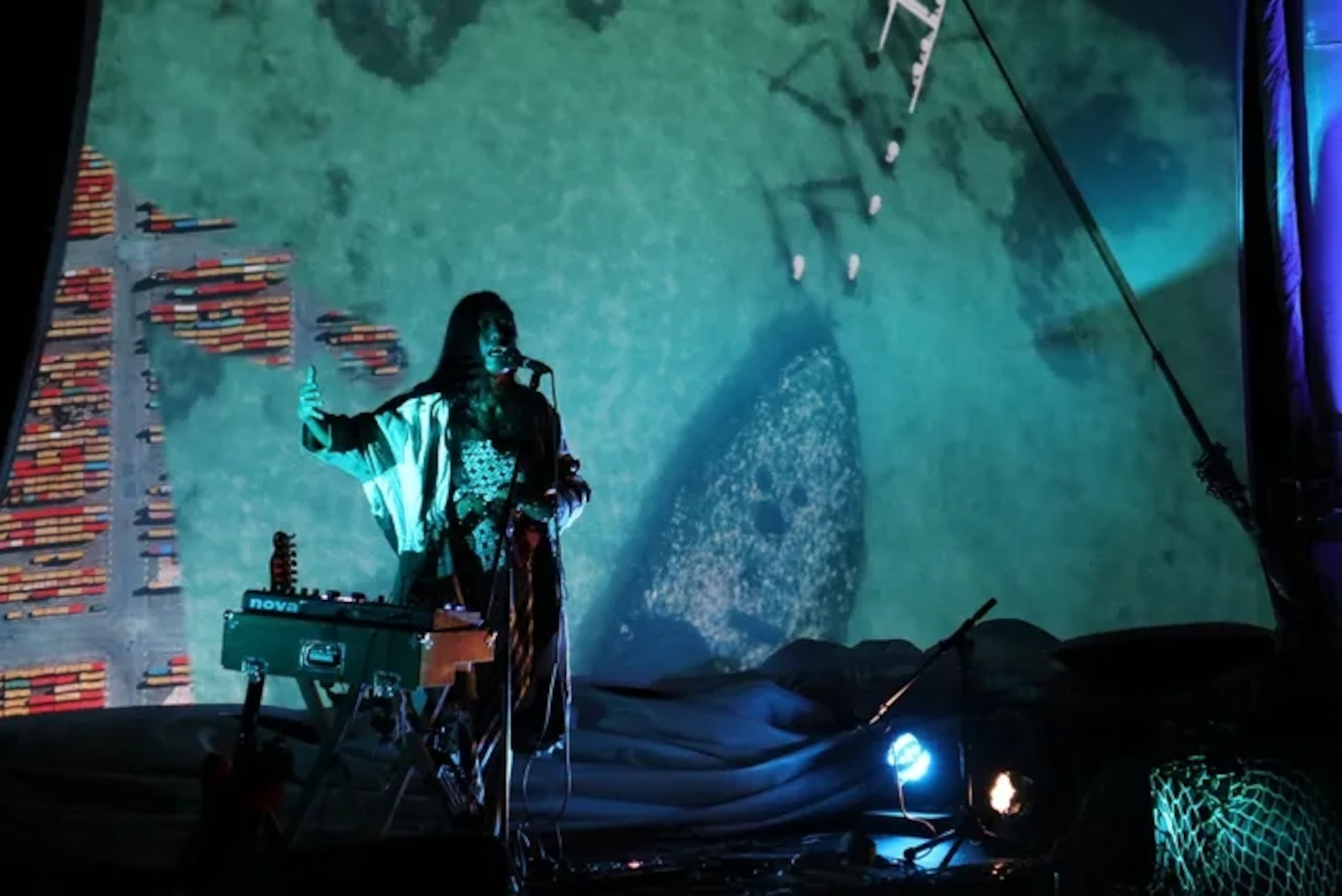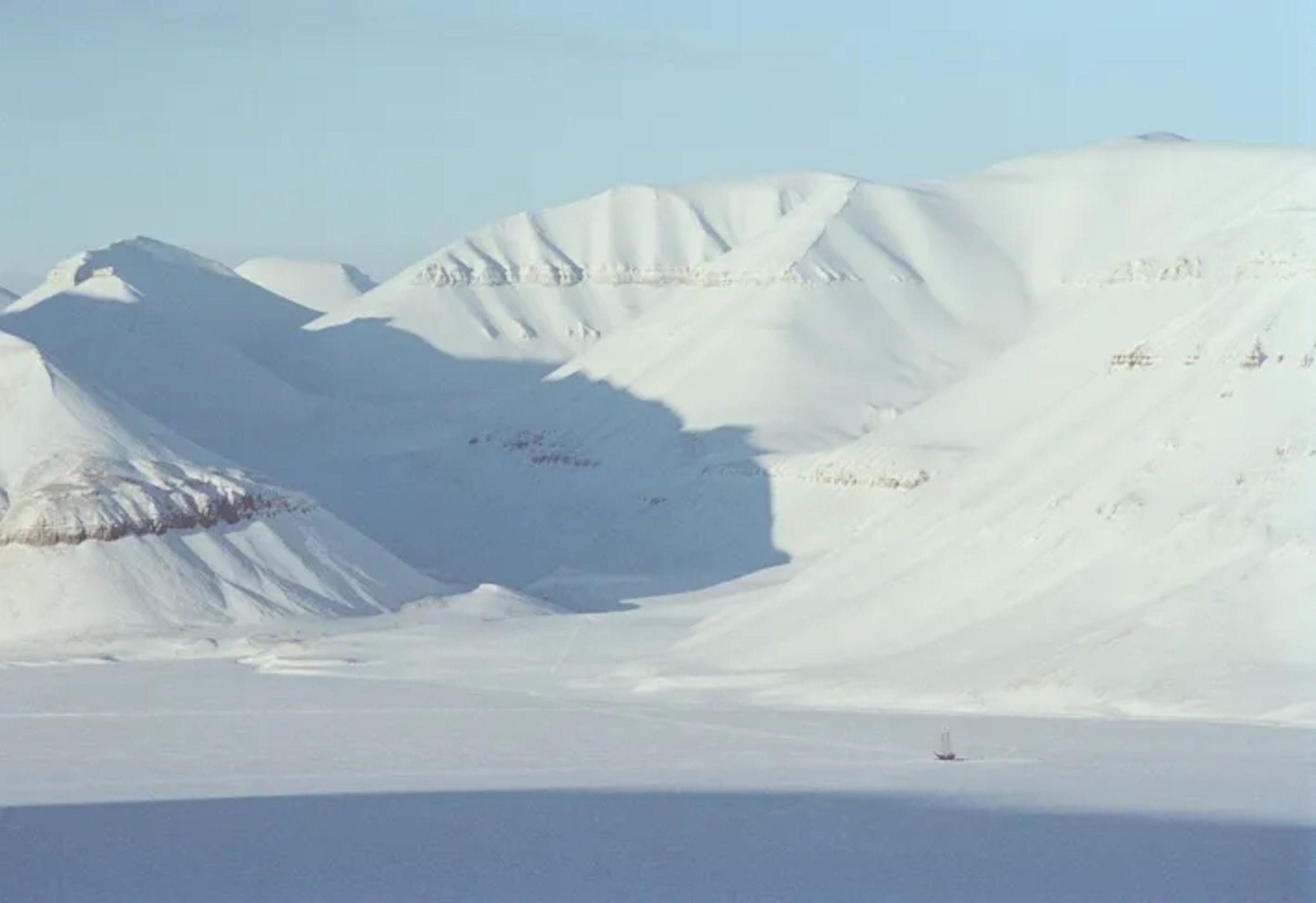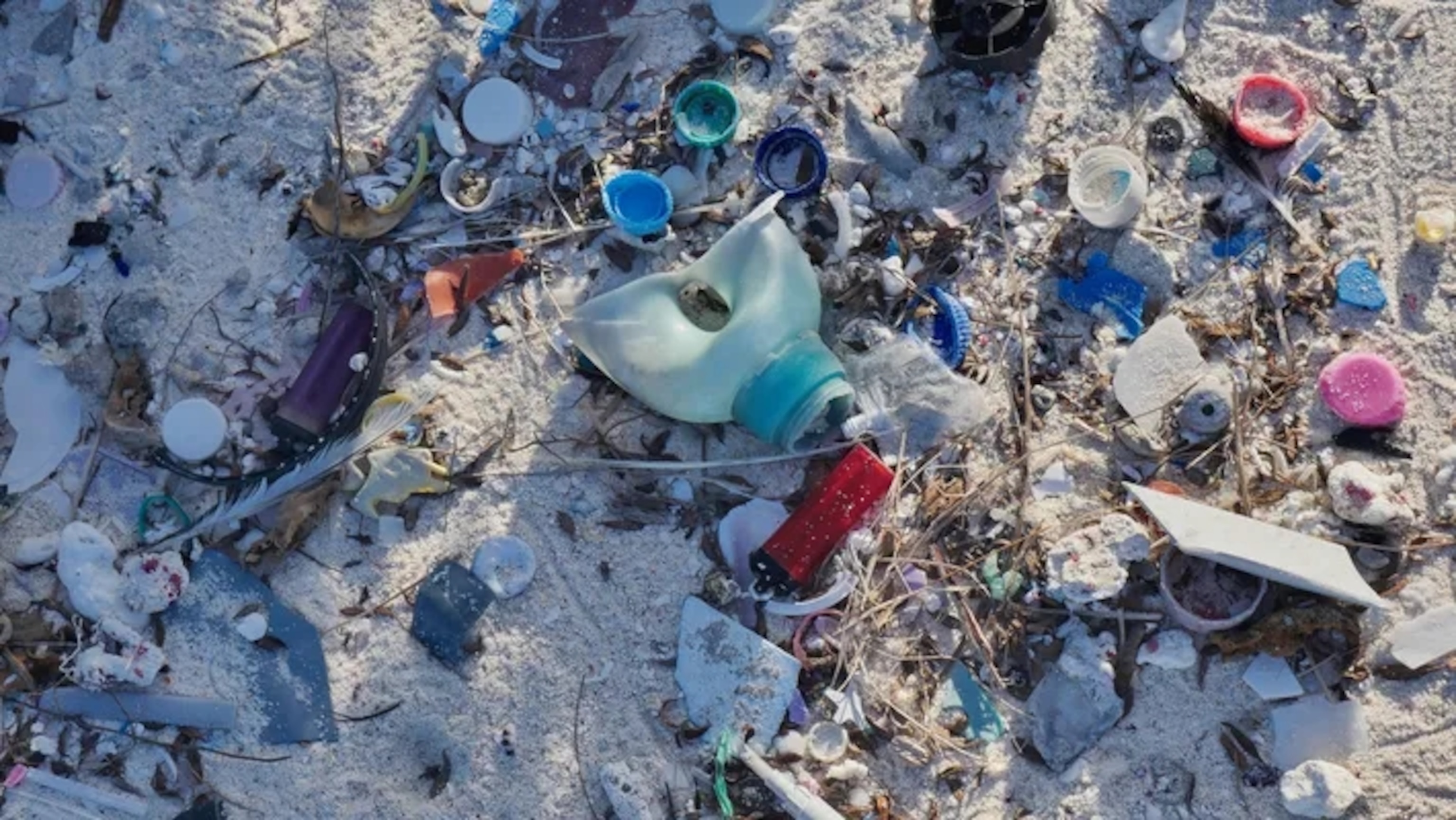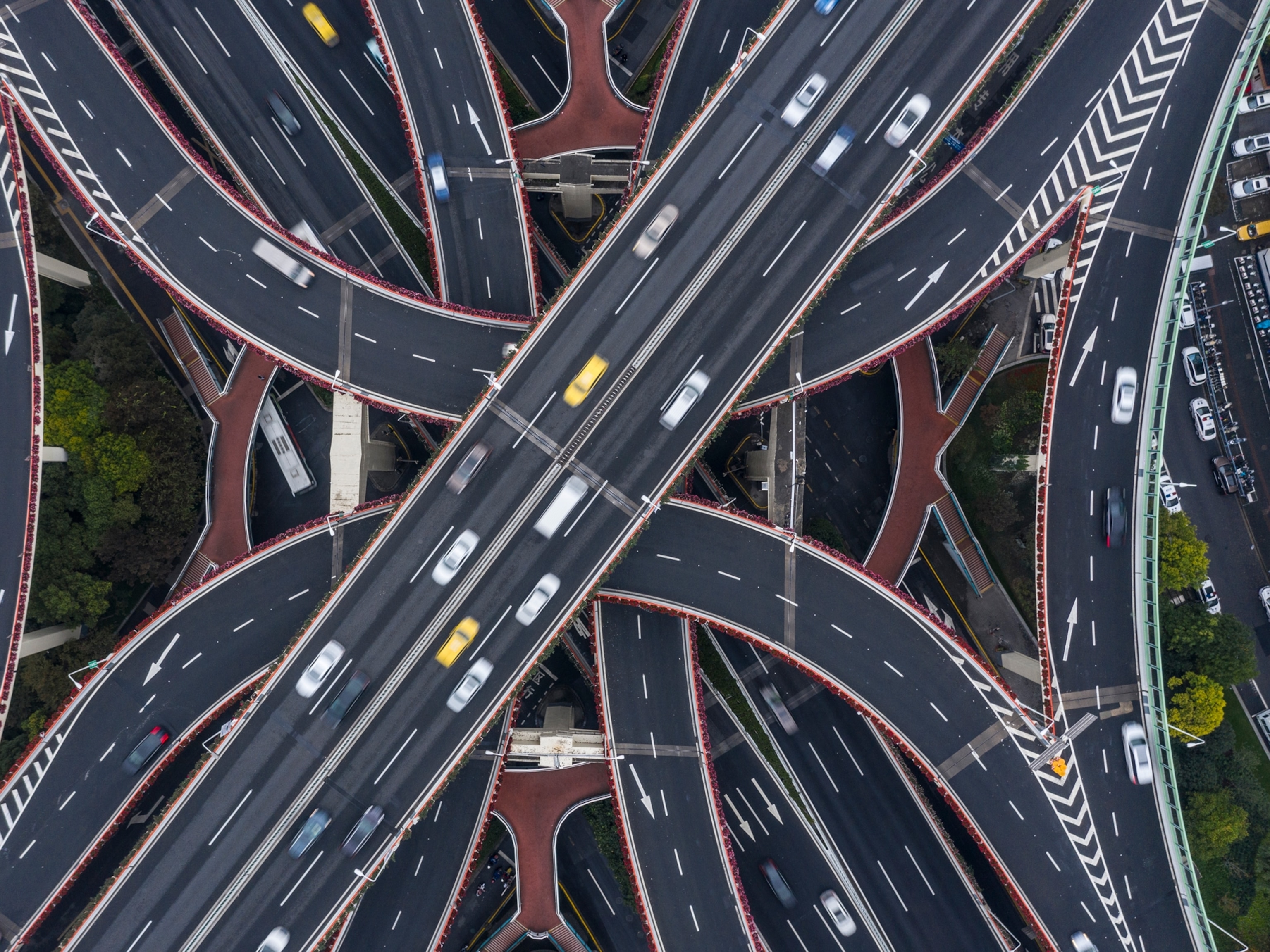
Meet the creatives taking to the ocean to spread a message about the climate crisis
As the climate-change conversation picks up pace, the focus is turning to the sea, which is proving to be a breeding ground for creative collectives bringing together art, climate activism and a love of the high seas.
A 75ft antique sailing vessel glides towards a spit of sand in Indonesia. This is no ordinary journey. Arka Kinari is no ordinary ship. The hull is brightly decorated with stars and geometric patterns, painted by US street artist Shrine, and it’s packed with subwoofers, lighting rigs and costumes. The crew are carrying drums and guitars.
The spit of Indonesian sand is home to Koja Doi, a stilt village teetering in the Flores Sea. The schooner navigates a gap in the surrounding reef to make its approach. "Who are you? Where are you coming from?," shout the local children at Grey Filastine. Along with partner Nova Ruth, Grey is co-founder of Arka Kinari, a project that shares its name with the boat and its resident musicians. The duo found underground success as musicians, flying around the world to play shows that explored ecological frictions and political borders. But they longed to create a platform that matched their message, so after raising funds by selling Grey’s house in Seattle and taking out a loan, a two-year search for a suitable ship began.
In September 2019, after months of grueling renovation on a “rust bucket” in Rotterdam, Arka Kinari set sail, a floating cultural platform on a mission to share a message about climate resilience through music and art. The pair were joined by a cast of lighting and sound engineers who doubled as crew. Only the captain had seafaring experience. “I didn’t even know how to tie a bowline knot,” Grey tells me. The crew learned seafaring skills fast on what became a 30,000-nautical mile journey that took them to Mexico, Hawaii and, eventually, to the teetering stilt village in Indonesia.

On that first evening, after the call to prayer, the residents of Koja Doi gathered on the dock. The young people perform a welcome dance in bright orange traditional dress. When they finish, it’s the turn of Arka Kinari. The deck transforms into multiple stages. Nova kicks things off, incarnating the goddess of the Southern Ocean, her ethereal song of Javanese poetry carrying into the night. Grey joins on percussion, his face draped in sequin cloth. They’re silhouetted against the sail, now doubling as a projection screen, displaying cinematic visuals which imagine a future after the seas have risen. The crew play out the survivors, here to sound the alarm for ecological disaster and invite the audience to join them in a new future.
“We’re not a novelty,” says Grey, when I attend a presentation he gives about the project aboard a barge on the Newton Creek in Brooklyn, New York two years later in 2021. He has bright green eyes and a gold tooth, the lines on his face those of a man who spent the past many months at sea. Occasional airplanes overhead drown out his voice. “Throughout time, messages have come through people arriving on ships, sharing stories through music and shadows and light. We are the 21st-century version [of this].”
Grey refers to the water as “the last great common” [ground] and a place where “artists can dance around the rules of the world”. Indeed, Arka Kinari isn’t the only creative collective taking to the ocean to spread a message about the climate crisis, and for many of these groups — call them ‘floating artivists’ if you like — the sea offers the freedom Grey refers to. Artist Caledonia ‘Callie’ Curry, for example — whose work appears under the name ‘Swoon’ — crashed the Venice Biennial uninvited in 2009, floating down the lagoon on a fleet of rafts crafted from junk with a crew of madcap collaborators. They’d travelled, haphazardly, from Slovenia, navigating small jaunts until they reached the Adriatic Sea, hugging the shore before moving into the protected inland canals of Italy. ‘Swimming Cities of Serenissima’, as the project was called, functioned as stage, sculpture, and social intervention, prefiguring some of the collectives emerging today.
Elsewhere, Scandinavian group Acting for Climate aims to ‘inspire audiences to act for a more sustainable future’, so it made sense that they staged and toured their first show in 2019 on board Hawila, a 105ft, two-masted, wooden sailing ship from the 1930s. Cofounder and circus performer Abigael Winsvold has sailed since she was a child, growing up in Melsomvik, a Norwegian village by the sea, but she’d never been on a ship this size. “It’s huge,” she tells me delightedly, speaking from Copenhagen, where she’s just moved into a boat of her own. “You need so many people for every manoeuvre. It’s so much about collaboration and coordination.”
The boat is equipped with a shaft alternator, built by captain Samuel Faucherre (who has a PhD in Arctic permafrost) to generate electricity from the wind. Committed to travelling sustainably, the crew decide to turn off all engines when the wind drops rather than rely on petrol. They navigated manually and took in turns to pump water out of the ancient hole-pocked hull by hand. “It was really back to basics,” Abigael says. “Just being there on the sea, together as a group — that was my highlight.”
The Hawila crisscrossed the Kattegat, the waterway separating Sweden and Denmark, staging mini festivals at each port. Performer and activist Emma Langmoen recalls docking opposite Oslo Opera House. “This ship of people with torn clothes arrived in the middle of the city,” she says. "We had to pull our mattresses onto the dock to dry in a place where people walk around wearing suits; it showed an alternative way of living, for sure.”
The show, ‘Into the Water’, uses the boat as an interactive stage — a “playground”, in Abigael’s words — with aerial acrobatics across the rigging, balancing acts on the bow sprit, and performers leaping in and out of the sea, moving from chaos to hope. It culminates in an immersive ritual with the audience. “People physically pass water from hand to hand through a huge crowd,” Emma says. “They’re laughing, crying, really connecting with each other and the water.”
The group’s next show, ’Ripples’, is currently under development and will tour the Baltic Sea in 2022. It explores ‘eco grief’, something Abigael and Emma say their entire group of young performers has experienced. “There’s so much dystopia,” Abigael says. “It’s really hard to work toward something if everything is about what we can’t do. Our focus is on what we can do. How do we want the world to look?”
For the first expedition in 2003, Buckland filled 20 berths of the Noorderlicht, a century-old Dutch schooner, with artists and oceanographers and set sail from Tromsø, Norway.

Addressing these questions was part of the impetus behind British artist David Buckland’s Cape Farewell project. In 2001, when “climate was on few people’s agenda”, he sought to bring the creative community together with scientists on expeditions to inspire work that would illuminate the urgency with which he believed the world needed to act.
For the first expedition in 2003, Buckland filled 20 berths of the Noorderlicht, a century-old Dutch schooner, with artists and oceanographers and set sail from Tromsø, Norway. “It was May and the sun was literally doing little circles above our heads,” David tells me, speaking from Cape Farewell headquarters in Dorset. They passed through the ‘Devil’s dance floor’, as the Barents Sea is known, with “the boat doing somersaults” before reaching the Svalbard archipelago, with its sparkling glaciers and rugged tundra. “We had to break the ice to get in, and then it’s just stillness to die for,” David recalls. “Every time you turn you see a glacier or polar bears — magic!”
Sound artist Max Eastley dipped his hydrophone into the water and his face lit up. “One of the rare pleasures in life is hearing the sex calls of a bearded seal,” David laughs. Max went on to make Arctic, an album of “sonic images” using recordings from the trip — just one piece of an enormous body of work created in the two decades since Cape Farewell’s inaugural expedition. They have since brought 350 creatives — including British sculptor Anthony Gormley, British novelist Ian McKewan and Canadian-American singer-songwriter Martha Wainwright — and dozens of scientists on expeditions to the Arctic, Scottish island communities and the Andean rainforest. Next? The Marshall Islands in 2022. Covid-permitting.

With 29 low-lying atolls in the central Pacific, the island nation faces an existential threat from rising sea levels. It’s also dealing with the ongoing fallout from historic nuclear testing by the US. “Through these two issues, we have the capability to end all life on the planet, and they’re played out on this little island where a 3,000-year-old culture is under threat,” David Buckland says. “Societies like the Marshall Islands have done so little to cause climate change but are the ones suffering.”
It is communities like the Marshallese that Arka Kinari hopes to reach when it next sets sail, in 2022. The most recent tour was interrupted by the pandemic, with the crew stranded at sea for months, “floating in the doldrums,” according to Grey as the world shut its borders. “Arka Kinari was built to tour through collapse,” Grey says. “We create our own electricity, we fish, we make our own water. It would have been disingenuous for us to put the project on pause.” They were eventually granted safe passage to Indonesia, Nova Ruth’s home country, and staged a DIY tour in the region, incorporating workshops on renewable energies and sailing skills into their program.
The work of groups like Arka Kinari take place in a world where the parameters which stymie progress – borders and political interests – are rendered meaningless. They invite us to imagine that world and to partake in its creation. “Arka Kinari is about the future,” Grey Filastine tells me in our final conversation. “We’re going to live differently — in a low-carbon way — so we may as well embrace it and find what’s beautiful about it now.”
Follow us on social media
Twitter | Facebook | Instagram







